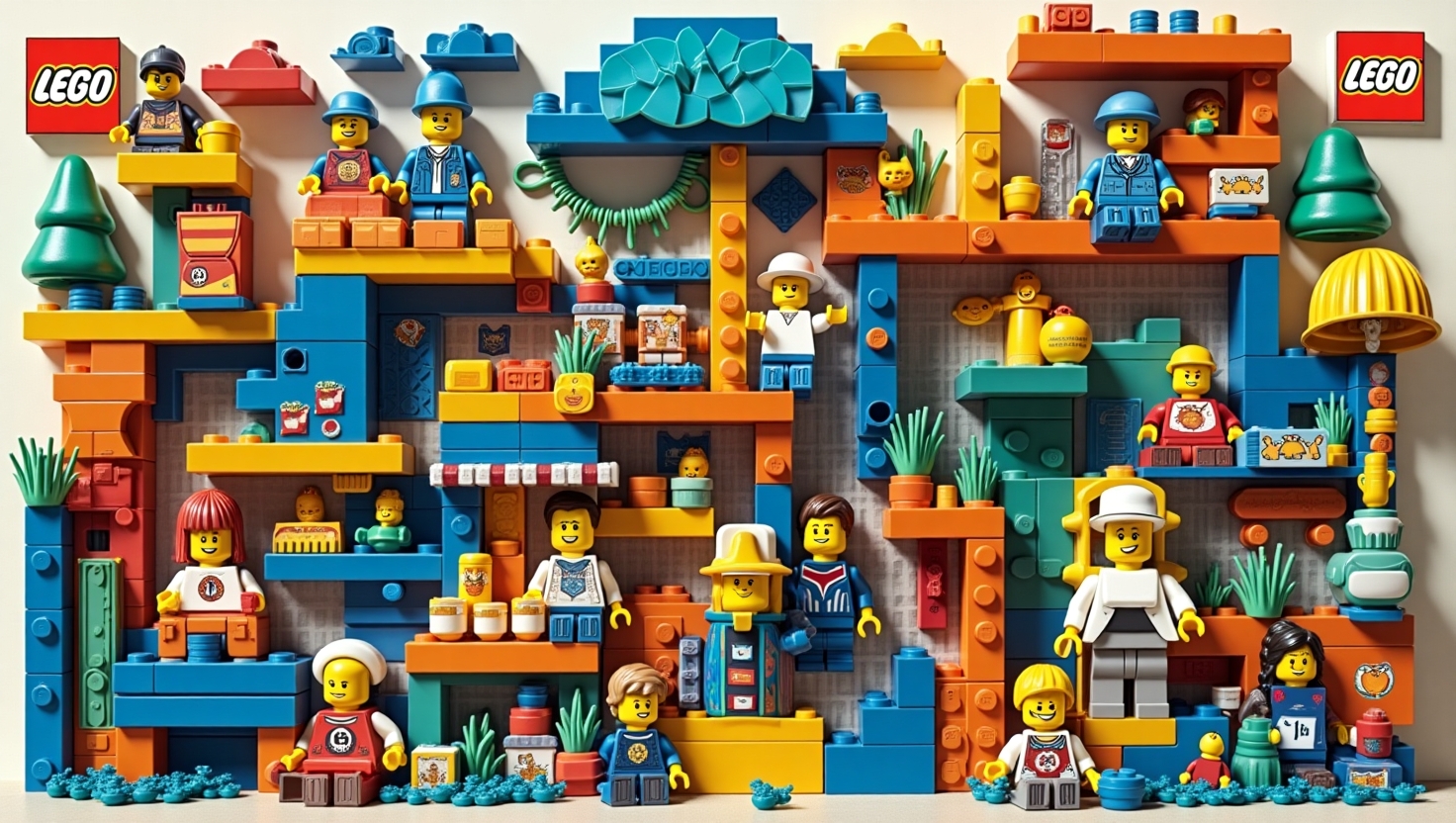Why LEGO’s Crowdfunding Revolution Is Making Collectors Panic – The BDP Series 6 Dilemma Explained
Introduction: The LEGO Crowdfunding Revolution
The LEGO community is witnessing an unprecedented shift as fan-designed sets transition from niche concepts to mainstream collectibles, sparking both excitement and anxiety among enthusiasts. The BrickLink Designer Program Series 6 launch exemplifies this transformation, with its five featured sets achieving remarkable crowdfunding success within hours of availability. These limited edition LEGO creations—The Art Factory, Gold Mine Expedition, Off-Road Adventure, Outlaw Forest Den, and Sequoia Tree Trail—represent a new era where community creativity directly influences production. The program’s flexible manufacturing approach has prevented the instantaneous sellouts that characterized earlier series, yet technical challenges during ordering created a digital frenzy reminiscent of concert ticket scrambles. This analysis explores how LEGO crowdfunding is reshaping collector behavior and what Series 6 reveals about the future of fan-driven design in the LEGO ecosystem.
Background: Understanding the BrickLink Designer Program Legacy
The BrickLink Designer Program represents LEGO’s strategic evolution in harnessing community creativity. Since its inception, the program has systematically dismantled barriers between fans and official production, creating a structured pathway for amateur designers to achieve commercial recognition. Previous series established critical precedents: Series 1-3 demonstrated overwhelming demand for fan creations, while Series 4-5 introduced production flexibility to address availability concerns. The partnership between LEGO and BrickLink has matured through iterative improvements, with each series incorporating lessons from its predecessors. This legacy of adaptation culminates in Series 6’s refined approach, where dynamic production allocation and household limits reflect accumulated institutional knowledge. The program’s history reveals a consistent pattern: LEGO systematically leverages fan passion while implementing safeguards to maintain brand integrity and market stability.
Trend Analysis: The Rise of Fan-Designed Sets in LEGO Crowdfunding
Fan-designed sets are no longer peripheral novelties but central to LEGO’s product strategy, with Series 6 cementing this transition. The program’s crowdfunding model has evolved significantly, with Series 6 featuring a condensed one-week pre-order window compared to previous extended periods—a strategic move creating urgency while testing market responsiveness. The flexible production framework operates similarly to airline revenue management systems: popular sets like Outlaw Forest Den can expand production by reallocating capacity from less-demanded designs, optimizing overall fulfillment. However, this innovation encountered technical limitations, as LEGO’s ordering infrastructure struggled with concurrent demand spikes, particularly affecting US customers. Community response highlights a fundamental tension: collectors appreciate increased availability but lament the digital bottlenecks that compromise access. This trend toward LEGO crowdfunding demonstrates the brand’s commitment to demand-responsive production while exposing operational vulnerabilities under peak load conditions.
Key Insights: What BDP Series 6 Reveals About Modern LEGO Collecting
Series 6 provides unprecedented transparency into LEGO collector sets economics and consumer behavior. The five sets span strategic price points and complexity levels:
– The Art Factory (2256 pieces, £199.99/$229.99/€229.99) appeals to creative builders
– Gold Mine Expedition (3382 pieces, £269.99/$299.99/€299.99) targets experienced enthusiasts
– Off-Road Adventure (978 pieces, £69.99/$79.99/€79.99) serves as entry-point offering
– Outlaw Forest Den (2618 pieces, £199.99/$229.99/€229.99) emerged as popularity leader
– Sequoia Tree Trail (3187 pieces, £239.99/$269.99/€269.99) balances size and affordability
The program’s success metrics are illuminating: Outlaw Forest Den achieved over 39,000 units sold, far exceeding the 3,000-unit production threshold while approaching the 30,000-unit maximum cap. This performance underscores the commercial viability of fan-designed sets at scale. The household limit of two units effectively curbed speculation while ensuring broader distribution. With shipping scheduled for March 2026, the extended timeline demonstrates LEGO’s strategic production planning for specialized releases. As reported by Brickset, the flexible production approach prevented the rapid sellouts that frustrated collectors in earlier series, though technical issues during ordering created accessibility barriers.
Future Forecast: Where LEGO Crowdfunding and Fan-Designed Sets Are Headed
The BrickLink Designer Program Series 6 establishes foundational patterns that will likely influence future LEGO crowdfunding initiatives. Based on current trajectories, several developments appear probable:
– Technical Infrastructure Overhaul: The ordering system failures will likely prompt significant investment in e-commerce capabilities, potentially incorporating queue systems or staggered regional releases to manage traffic spikes
– Production Model Refinement: Dynamic allocation between sets may evolve into more sophisticated demand forecasting, with artificial intelligence potentially predicting popularity before crowdfunding concludes
– Expanded Designer Participation: Future series may incorporate more international designers or thematic categories to diversify offerings
– Secondary Market Regulation: As noted by Jay’s Brick Blog, household limits may become more nuanced, potentially varying by set popularity or collector history
– Integration with Digital Platforms: Augmented reality previews or building instruction apps could enhance the fan-designed experience
The growing limited edition LEGO market suggests collector preferences are shifting toward exclusive, narrative-rich sets rather than mainstream releases. Future BDP iterations will likely further blur boundaries between official and community content, potentially incorporating fan voting on proposed designs or collaborative development processes.
Summary: The Impact of BrickLink Designer Program Series 6
The BDP Series 6 review consensus confirms this series represents a pivotal moment in LEGO’s engagement with its community. By successfully implementing flexible production while maintaining the exclusivity that defines LEGO collector sets, the program has established a sustainable model for fan collaboration. The technical challenges, while significant, provide valuable data for infrastructure improvements in future releases. For collectors, Series 6 demonstrates both the accessibility benefits of expanded production and the persistent competition for desirable sets. The program’s legacy will likely influence not only subsequent BDP series but LEGO’s broader approach to limited editions and community co-creation. As the boundaries between official and fan content continue to dissolve, Series 6 stands as a testament to the commercial and creative potential of structured collaboration in the building block ecosystem.

